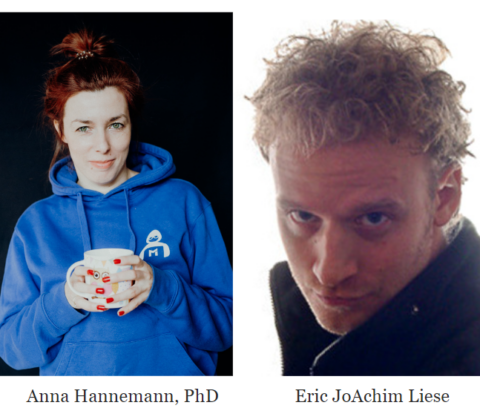Kategorie: Data science
Exploring BERT: Feature extraction & Fine-tuning
Natural language processing (NLP) is a set of techniques that aim to interpret and analyze human languages. By using it in more complex pipelines, we can solve predictive analytics tasks and extract valuable insights from unstructured text data.
A major breakthrough was made in the field of NLP by the introduction of transformers, which paved the way for large language models (LLMs) and generative AI research (e.g. BERT, BART, GPT).
In this article, we walk through different concepts of NLP. In the first section, we summarize the architecture of transformers and highlight its core concepts, such as the attention mechanism. Then, in the second section, we focus on BERT, one of the most popular Transformer-based LLMs, and we present examples of how it is used in data science applications.
Why creatives in advertising should embrace data science and data mining – an interview with Les Guessing
Contextualizing our world with data, part 1: Advertising. Les Guessing has a high school degree (barely) but has managed to find great success as an Emmy Winning Copywriter / Creative Director in Los Angeles (and beyond) in advertising – the marketing arm of Capitalism. Over the last 10 years, he has become hellbent on using data/Data Science/Machine Learning and aspects of Artificial Intelligence (especially NLP, Natural Language Processing) to make advertising creative more insightful, more efficient, more impactful, and funnier. He explains why creatives should work with data because. Among other reasons, the creative mindset enables them to look at data and see something from an entirely different perspective than data people.
Das Produktlebenszyklusmanagement im Zeitalter der intelligenten Geräte – ein Interview mit Eric JoAchim Liese
Wie managt man ein Data Science Produkt, Teil 2: Da die Geräte immer intelligenter werden, muss sich das Produktlebenszyklusmanagement weiterentwickeln, um die Daten als langfristigen Wert und Teil der Kundenbeziehung zu betrachten. Eric Joachim Liese spricht über Edge Computing und Geräteautonomie als Voraussetzung für ein gutes Kundenerlebnis. Er erklärt auch, wie traditionelle Hardware-Hersteller ihre Betriebsabläufe weiterentwickeln und Fachkräfte einstellen können, um diesen Weg erfolgreich zu beschreiten
Product lifecycle management in the era of smart devices – an Interview with Eric JoAchim Liese
How to Manage the Data Science Product, Part 2: As devices get smart, product lifecycle management for hardware needs to evolve to encompass the view of data as a long-term asset and as an active, even pro-active part of the customer relationship. Eric JoAchim Liese talks about edge computing and device autonomy as being requisite to providing a good customer experience. He also explains how traditional hardware manufacturers can evolve their operations and hire in expertise to successfully navigate the journey.
Das Management des Data Science Produktes – ein Interview mit Anna Hannemann, PhD
Wie managt man ein Data Science Produkt, Teil 1: Algorithmen sind Produkte, die gemanagt werden müssen, um geschäftliche Ergebnisse zu erzielen. Anna Hannemann, PhD von Metro.digital erzählt, was sie als Pionierin im Produktmanagement für Datenwissenschaft gelernt hat. Sie spricht auch über den organisatorischen Aufbau, die Kompetenzen, die vorhanden sein müssen, und darüber, wie neue Tools das Management von Data-Science-Produkten beeinflussen.
Managing the data science product – an interview with Anna Hannemann, PhD
How to manage the data science product, Part 1: Algorithms are now products that need to be managed for business impact. Anna Hannemann, PhD of Metro.digital shares what she has learned as a pioneer in data science product management. She shares some key success factors for data science product development to drive monetization and growth .She also talks about organizational design, competencies that need to be in place and how new tools are impacting how data science products are managed.
Wie managt man ein Data Science Produkt? – Eine Serie von D3M Labs
Die Datenwissenschaft entwickelt sich von der Forschung und Entwicklung zu Produkten – sowohl online als auch offline….
The prevalence of AI and importance of engaging in dialogue
AI is becoming omnipresent in our lives and is shaping our world. Thus wider public involvement in determining how AI is designed and used is important for society. Understanding AI and getting involved in how it is applied and governed might seem daunting, but Varsh Anilkumar offers some ways to get involved and learn about AI.
Beyond the algorithm, the realities of operationalizing AI – A podcast interview with Elizabeth Press
The AI mystique might be the biggest obstacle to AI adoption. The artisanal data scientist who works on an alchemy of code output the magical algorithm impedes discussion on what is needed to commercialize and scale AI solutions. AI needs to be treated like a product and an item to be manufactured and scaled on an industrial level.
Why the public needs to know more about AI – An interview with Varsh Anilkumar
AI is still magical to many people. Is that a major obstacle to AI adoption? Varshith H Anilkumar talked to myself and the D3M Labs community about what can be done to create a more AI-aware public and how that will help decrease bias and improve innovation.








